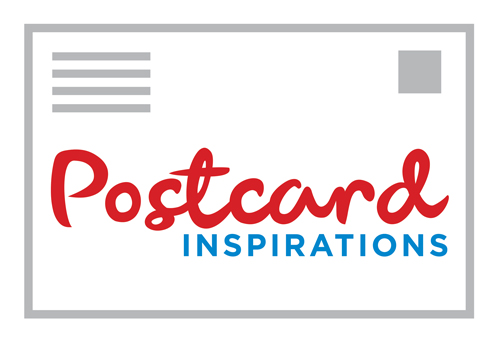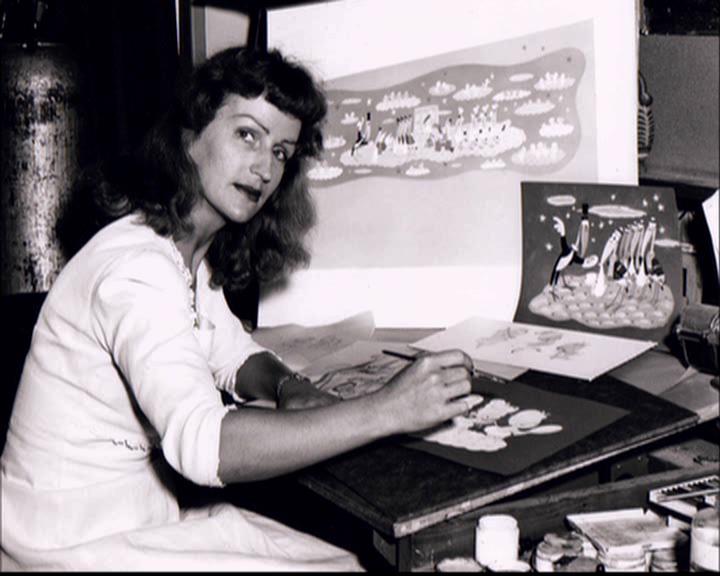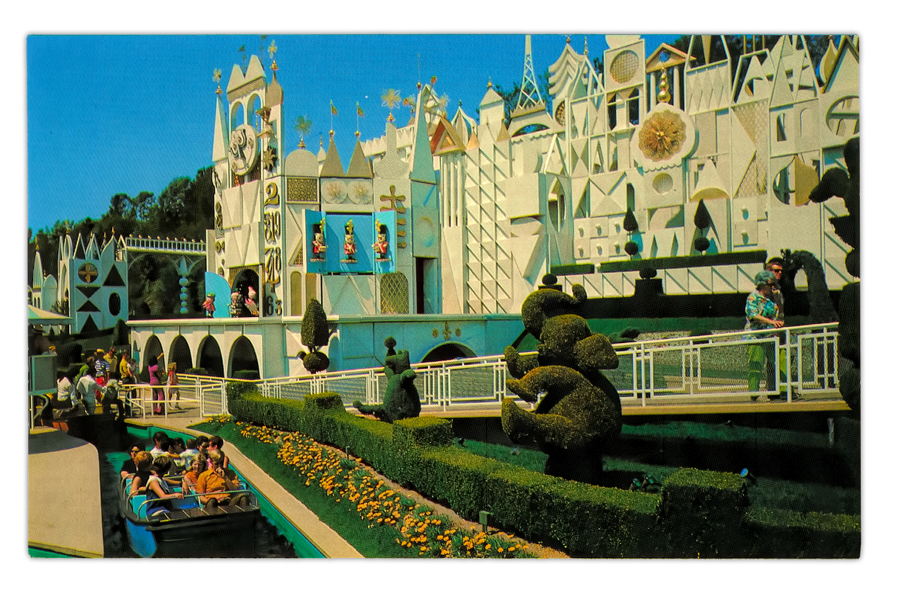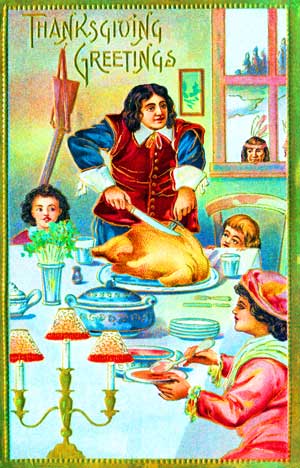Mary Blair, maiden name Robinson, was born in 1911 and was a prominent artist and animator at the Walt Disney Company. While she has an impressive collection of non-Disney art that is valuable and important to the history of American art on its own, it is the work she did for Disney that she is best known for today.
She did concept art for such Disney movies as Song of the South, Peter Pan, Alice in Wonderland, and Cinderella. She also did the character designs for attractions at Disney theme parks, including the It’s a Small World ride, the fiesta scene at the Mexico pavilion at EPCOT, and the huge mosaic in the Contemporary Hotel at Walt Disney World.
Mary was born in McAlester, Oklahoma, but moved with her family to Texas when she was still a small child. Later, she moved to Morgan Hill, California in her early 20’s. She attended San Jose State University and won a scholarship to Chouinard Art University in Los Angeles. After graduating from Chouinard in 1933, she married fellow artist Lee Everett Blair in 1934. She and Lee became members of the California School of Water Color, and she quickly gained a positive reputation as an imaginative designer and colorist.
Her exemplary reputation gained Mary her first professional animation job at Metro-Goldwyn-Mayer. Not long after, she left that studio and went with her husband to work at the Ub Iwerks studio, before going to work for Iwerks’s friend, Walt Disney at his company. This was all during the 1930s when Mary was also part of the California Water Color Society, an innovative artist group.
In 1940, she went to work for Disney, although with some initial reluctance. Her first projects there were for Dumbo, an early version of Lady and the Tramp, and the second version of Fantasia (that was not released until the late 1990s). After this, Mary briefly left Disney in 1941 and went to several countries in South America with Walt Disney, his wife Lillian, and other artists on a research trip. The trip was part of President Franklin D. Roosevelt’s Good Neighbor Program. On the trip, Mary’s watercolor works impressed Walt so much that he gave her the job of art supervisor for the animated movies Saludos Amigos and The Three Caballeros.
Mary began working on color design and animation on some of Disney’s major films in 1943 and worked on animation at Disney for a decade. Even after her full-time work with Disney was done, she still worked on some Disney projects, including Fun and Fancy Free, Song of the South, and So Dear to My Heart. During her time with Disney as a full-time employee, the company was producing an animated film about every year, and Mary did the color styling for Cinderella, Alice in Wonderland, and Peter Pan, as well as several of Disney’s animated short films.
Once she was done working on Peter Pan, Mary resigned from the Disney Company and worked as a freelance graphic designer and illustrator. She did work for several advertising campaigns for big-name companies like Nabisco, Beatrice Foods, Maxwell House, and Pepsodent. She also illustrated quite a few of the popular Little Golden Books that were published by Simon & Schuster (some of which are still in print). In addition, Mary designed Christmas and Easter sets for Radio City Music Hall.
Mary’s work was highly respected by Walt Disney, and he personally requested that she work on the It’s a Small World ride for Disneyland. This ride was originally an exhibit sponsored by Pepsi-Co to benefit UNICEF at the 1964 World’s Fair in New York. The exhibit moved to Disneyland after the fair and was copied for Walt Disney World, Tokyo Disneyland, Disneyland Paris, and Hong Kong Disneyland. In addition to her work on It’s a Small World, Mary also made murals that were showcased at a variety of Disney parks, hotels, and attractions. Some were painted, and some were tile mosaics.
Dr. Jules Stein, a philanthropist, hired Walt Disney in 1966 to make a ceramic mural for the Eye Institute at the University of California, which was one of Stein’s projects that were newly opened. Mary had designed the mural for the pediatric surgery waiting room at the institute. The theme chosen by Walt for his mural was “It’s a Small World,” because of the artwork done on the attraction by Mary.
After Walt passed away, Mary continued to work on projects for the Disney Company. In 1967, she made a mural for the Promenade at Tomorrowland at Disneyland. Two other murals of a similar design were at the entrance to Tomorrowland. She did other murals for Tomorrowland, most of which have been covered up with new ones as themes and designs have changed at the park over the decades. However, her ninety-foot high mural at the Contemporary Hotel at Walt Disney World, which she did in time for the opening of the resort in 1971, is still there and is a focal point of the resort.
Mary made sets out of Walt Disney notecards for Hallmark. She was the color designer for the 1968 movie How to Succeed in Business Without Really Trying. Eventually, she moved to Washington state because of her husband’s new military career and later moved to Long Island, New York, where she had a home studio.
After living in New York for a while, Mary moved back to California, where she died in 1978, with a stroke being the cause. She was given the honor of being named a Disney Legend in 1991. She also received the Winsor McCay Award from ASIFA-Hollywood in 1996, in the same ceremony where two other Disney animators also received the same award.
Mary Blair was a definite influence on Disney’s animation and art at the parks. Her influence can still be seen and felt today. Among Walt Disney’s animation inspirations, Mary Blair was one of the most important.











